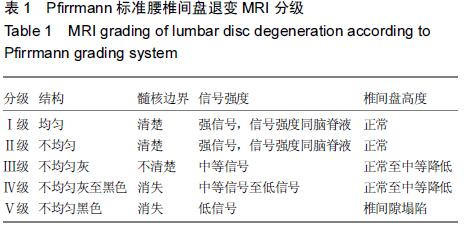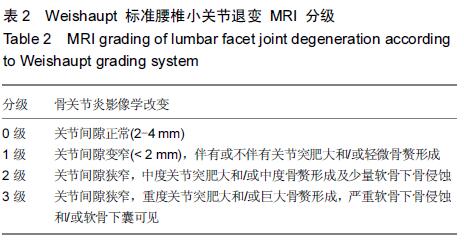[2] Rubin DI. Epidemiology and risk factors for spine pain. Neurol Clin. 2007; 25(2):353-371.
[3] Carragee EJ.Clinical practice. Persistent low back pain.N Engl J Med.2005;352(18):1891-1898.
[4] Hart LG,Deyo RA,Cherkin DC.Physician office visits for low back pain.Frequency, clinical evaluation, and treatment patterns from a U.S.national survey. Spine (Phila Pa 1976). 1995;20(1):11-19.
[5] Li J, Muehleman C, Abe Y, et al. Prevalence of facet joint degeneration in association with intervertebral joint degeneration in a sample of organ donors. J Orthop Res. 2011;29:1267-1274.
[6] Kirkaldy-Willis WH, Farfan HF.Instability of the lumbar spine.Clin Orthop.1982;110-123.
[7] Fujiwara A, Tamai K, Yamato M ,et al.The relationship between facet joint osteoarthritis and disc degeneration of the lumbar spine: an MRI study. Eur Spine J.1999;8(5):396-401.
[8] Butler D, Trafimow JH, Andersson GB, et al. Discs degenerate before facets. Spine. 1990;15:111-113.
[9] Kong MH, Morishita Y, He W,et al.Lumbar segmental mobility according to the grade of the disc, the facet joint,the muscle, and the ligament pathology by using kinetic magnetic resonance imaging. Spine.2009;34(23):2537-2544.
[10] Videman T, Battie MC, Gill K,et al. Magnetic resonance imaging findings and their relationships in the thoracic and lumbar spine. Insights into the etiopathogenesis of spinal degeneration. Spine.1995; 20(8):928-935.
[11] Suri P, Miyakoshi A, Hunter DJ, et al. Does lumbar spinal degeneration begin with the anterior structures? A study of the observed epidemiology in a community-based population. BMC Musculoskelet. Disord.2011;12:202.
[12] Gries NC,Berlemann U,Moore RJ,et al.Early histologic changes in lower lumber discs and facet joints and their correlation.Eur Spine J.2000;9:23-29.
[13] Eubanks JD, Lee MJ, Cassinelli E,et al. Does lumbar facet arthrosis precede disc degeneration? A postmortem study. Clin Orthop Relat Res.2007;464:184-189.
[14] Pfirrmann CW, Metzdorf A, Zanetti M,et al. Magnetic resonance classification of lumbar intervertebral disc degeneration.Spine.2001; 26:1873-1878
[15] Weishaupt D, Zanetti M, Boos N,et al. MR imaging and CT in osteoarthritis of the lumbar facet joints. Skeletal Radiol.1999; 28: 215-219.
[16] Haughton V. Imaging Techniques in Intraspinal Diseases. In: Diagnosis of bone and joint disorders. 3rd edn.(Resnick D, ed.). Saunders, Philadelphia. 1995:237-276.
[17] Pooya HA, Seguin B, Tucker RL et al. Magnetic resonance imaging in small animal medicine: clinical applications. Comp, Cont, Educ, Pract. Vet.2004;26: 292-301.
[18] Whatmough C, Lamb CR. Computed tomography: principles and applications. Compend, Contin, Educ, Pract, Vet.2006;28: 789-800.
[19] Kalichman L, Hunter DJ. Lumbar facet joint osteoarthritis: a review.Semin Arthritis Rheum.2007;37(2):69-80.
[20] Varlotta GP, Lefkowitz TR, Schweitzer M,et al. The lumbar facet joint: a review of current knowledge: part 1: anatomy, biomechanics, and grading. Skeletal Radiol.2011; 40(1): 13-23.
[21] Kettler A, Wilke HJ. Review of existing grading systems for cervical or lumbar disc and facet joint degeneration. Eur Spine J. 2006;15(6):705-718.
[22] Ko S, Vaccaro AR, Lee S,et al. The prevalence of lumbar spine facet joint osteoarthritis and its association with low back pain in selected Korean populations. Clin Orthop Surg. 2014;6(4):385-391.
[23] Yang KH, King AI. Mechanism of facet load transmission as a hypothesis for low back pain. Spine.1984;9:557-565.
[24] Li W, Wang S, Xia Q,et al. Lumbar facet joint motion in patients with degenerative disc disease at affected and adjacent levels: an in vivo biomechanical study. Spine.2011; 36(10):E629-637.
[25] Adams MA,Bogduk N.The biomechanics of back pain. Edinburgh:Churchill Livingstone, 2002:121-123.
[26] Fujiwara A, Tamai K, An HS, et al. The relationship between disc degeneration, facet joint osteoarthritis, and stability of the degenerative lumbar spine. J Spinal Disord .2000;13: 444-450.
[27] Swanepoel MW, Adams LM, Smeathers JE. Human lumbar apophyseal joint damage and intervertebral disc degeneration. Ann Rheum Dis.1995.54:182-188.
[28] Margulies JY, Payzer A, Nyska M,et al. The relationship between degenerative changes and osteoporosis in the lumbar spine.Clin Orthop Relat Res. 1996;(324):145-152.



